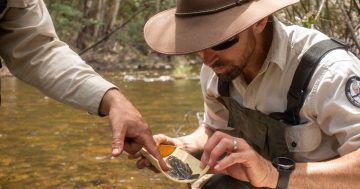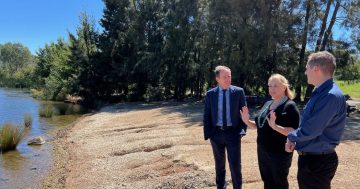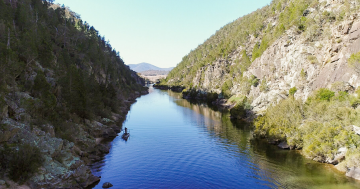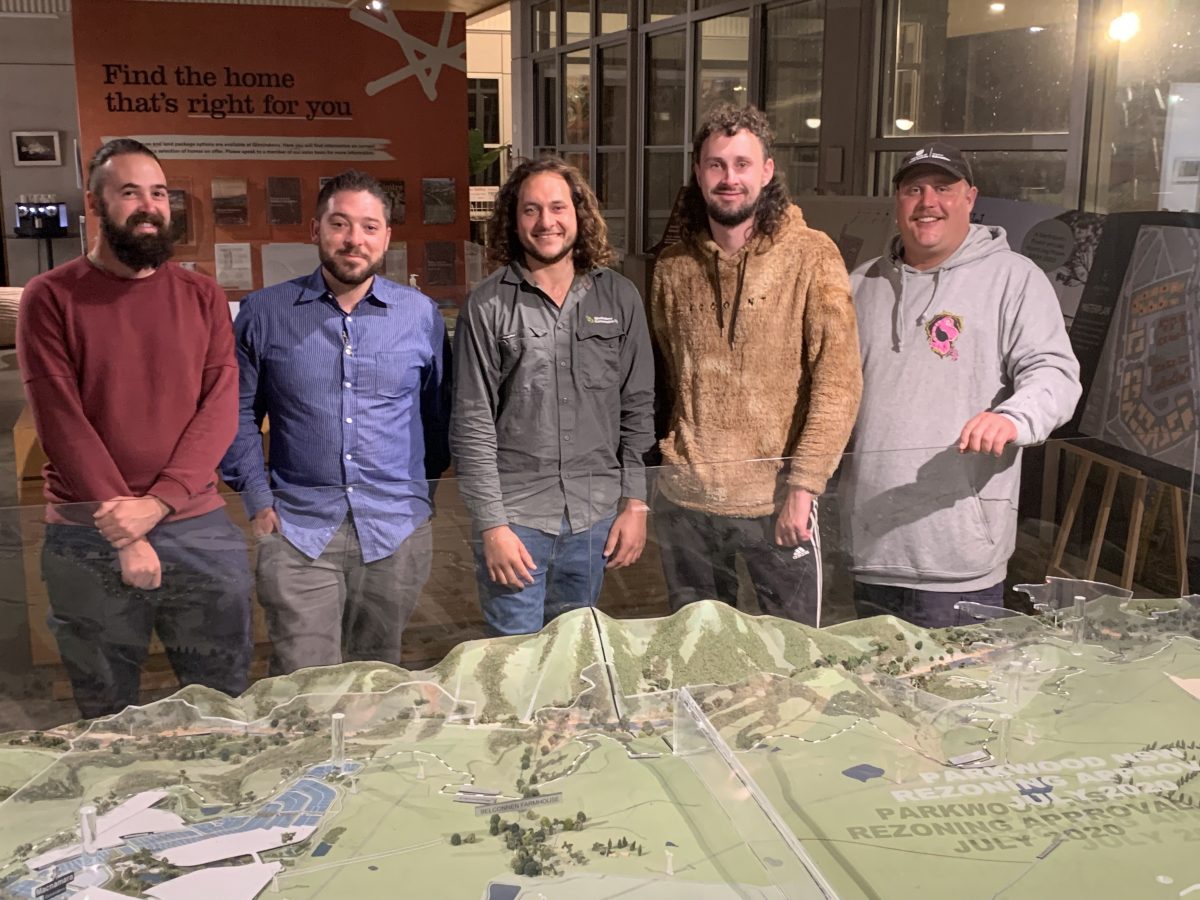
Local anglers gathered to hear speakers like Tyson Powell (centre) at the Thinking Fish forum organised by the new OzFish ACT Murrumbidgee Chapter. Photo: James Day.
OzFish’s new chapter in the ACT has wasted no time getting down to business, holding a forum recently about the future of the Territory’s waterways and what this means for recreational fishers.
The speakers at the Thinking Fish forum informed a room of around 20 locals and avid anglers about environmental issues and how they can make a difference in protecting the natural habitat.
As the population of the ACT continues to increase, there is a growing need for people to ensure they fish safely and responsibly in order to protect the region’s rivers. This is where OzFish Unlimited comes in: it supports grassroots work to restore healthy populations of native aquatic life through habitat restoration.
OzFish’s most recent Chapter was set up this year with the Ginninderry Conservation Trust and Boating, Camping, Fishing (BCF), and is tasked with protecting the Murrumbidgee River, particularly the upper section that runs between Shepherds Lookout and the Ginninderra Creek inflow.
The forum’s first speaker was park ranger and Chapter president Tyson Powell, who detailed his hopes for more volunteers to join the organisation.
“Key to getting people involved in fish habitat restoration is providing the information and tools to give them an understanding of why it’s important,” Powell said.
Volunteers are a vital part of the OzFish chapter and also have the opportunity to learn how to fish, assist in sustainability practices and participate in scientific research projects conducted by universities and other organisations.
One such organisation is the Australian River Restoration Centre, run by Director Dr Siwan Lovett, who spoke on several projects it is involved with across the ACT, including Rivers of Carbon, which consults directly with private landowners to encourage sustainable water management.
Following Dr Lovett was coworker Andy Lowes, who discussed the work they do together on the Forgotten River project, which seeks to improve the health of the Upper Murrumbidgee River.
As a Canberran who grew up on the rivers fishing and yabbying, Lowes spoke gravely of his concern for the Upper Murrumbidgee River’s health and the implications it has for the ACT’s future drinking water.
“When the Murrumbidgee River dried up around Tharwa, only a small community was affected. Now these bigger parts of the river are going, and with it, our drinking water supply.”
Attendees were pleased these issues were being brought to attention, as they impact more than just the fishing community.
“This is the stuff I hope we focus on, it should matter to all Canberrans but people really don’t know how much things have changed,” a watching member of the chapter said.
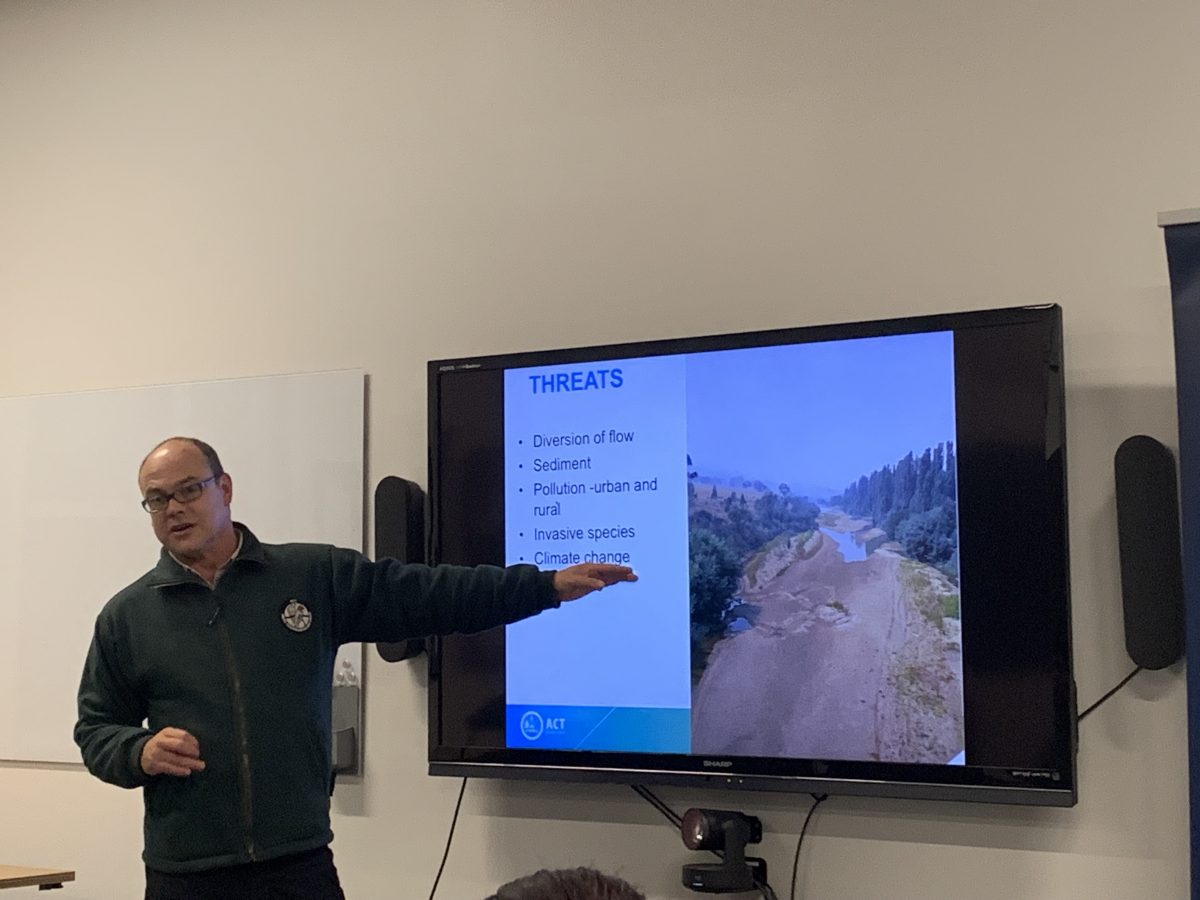
Matt Beitzel discussing the core threats on the Upper Murrumbidgee River. Photo: James Day.
Like the rest of the speakers, Lowes spoke of the important place recreational fishers have in these projects, and noted that scientists have a lot to learn from the locals who use our rivers on a regular basis.
“Often these recreational fishers know what’s going on better than scientists,” said Lowes.
Next was Antia Brademan, a facilitator at the Upper Murrumbidgee Demonstration Reach based in Cooma.
She spoke on the efforts her team have made in ensuring the survival of the endangered Macquarie perch and the issues they have identified based on their findings.
Her core issues were the need for more riparian trees along the river, providing safe habitats for native fish, and removing weeds like box elder and damaging species of willow.
Lastly, aquatic ecologist for the ACT Government Matt Beitzel spoke on the methods and results of fish surveys along the Murrumbidgee River.
He noted the importance of sustaining Murray cod numbers as the native fish is not stocked or repopulated, how they’ve adapted take and size limits in accordance with their latest science, and the variety of threats that are now bearing down on the river’s last native fish populations.
Beitzel concluded the evening by asking anglers to report any fish they’ve caught which are endangered, rare or new to the area to the Environment, Planning, and Sustainable Development Directorate. He provides the example of the silver perch and a recently identified trout/Murray cod hybrid.












